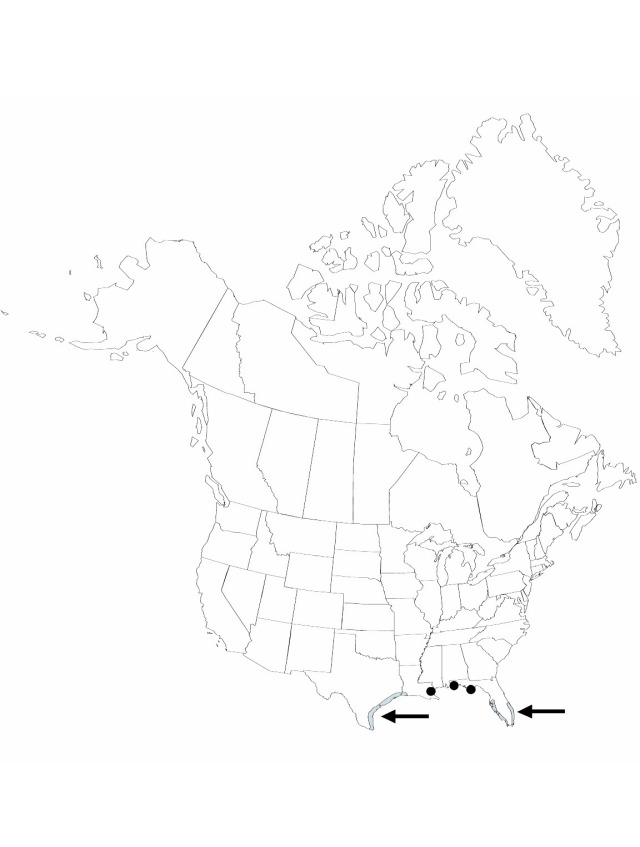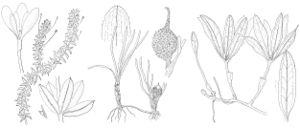Rhizomes elongate, 3–6 mm thick. Leaves 10–60 cm × 0.4–1.2 cmm, margins entire proximally, minutely serrulate near apex; veins 9–15. Inflorescences: staminate inflorescences 1–3-flowered; peduncles 3–7 cm; margins of spathes connate on 1 side; pistillate inflorescences 1-flowered; peduncles 3–4 cm; spathes connate on both sides. Flowers: staminate flowers: pedicels 1.2–2.5 cm; stamens 9; pistillate flowers nearly sessile, styles 7–8. Fruits bright green to yellow-green or red, 1.5–2.5 cm diam., dehiscing in 5–8 valves; beak 4–7 mm.
Phenology: Flowering spring–summer.
Habitat: Ocean floor consisting of organic matter, rock matter, coral sand, or dead reefs
Elevation: -10–0 m
Distribution

Fla., La., Tex., Mexico, West Indies, Central America, South America (Colombia).
Discussion
Thalassia testudinum is possibly the most important marine spermatophyte along the coasts of the Caribbean and Gulf of Mexico (C. den Hartog 1970). The species grows from the low-water mark to nearly 10 m depth in very clear water. Establishment occurs on a wide variety of substrates, including organic matter, rocky matter, coral sand, and dead reef-platforms. Once the species is established, the substrate type becomes less important, especially in areas of low current. Dead leaves and rhizomes accumulate among the erect living leaves for considerable periods of time. The beds are important not only in substrate development but also in substrate stabilization. Massive amounts of substrate are lost in areas without turtle-grass colonies during hurricanes, but only minimal loss occurs in turtle-grass beds. Substrate loss is lessened by roots and rhizomes binding the substrate, as well as by the leaves lowering water velocity.
Posidonia oceanica (Linnaeus) Delile was included in the Texas flora (D. S. Correll and M. C. Johnston 1970; D. S. Correll and H. B. Correll 1972) because of specimens washed ashore along the Gulf of Mexico. The specimens were later determined to be Thalassia testudinum, based upon comparative growth studies and upon flavonoid chemistry profiles (C. McMillan et al. 1975).
Selected References
None.
